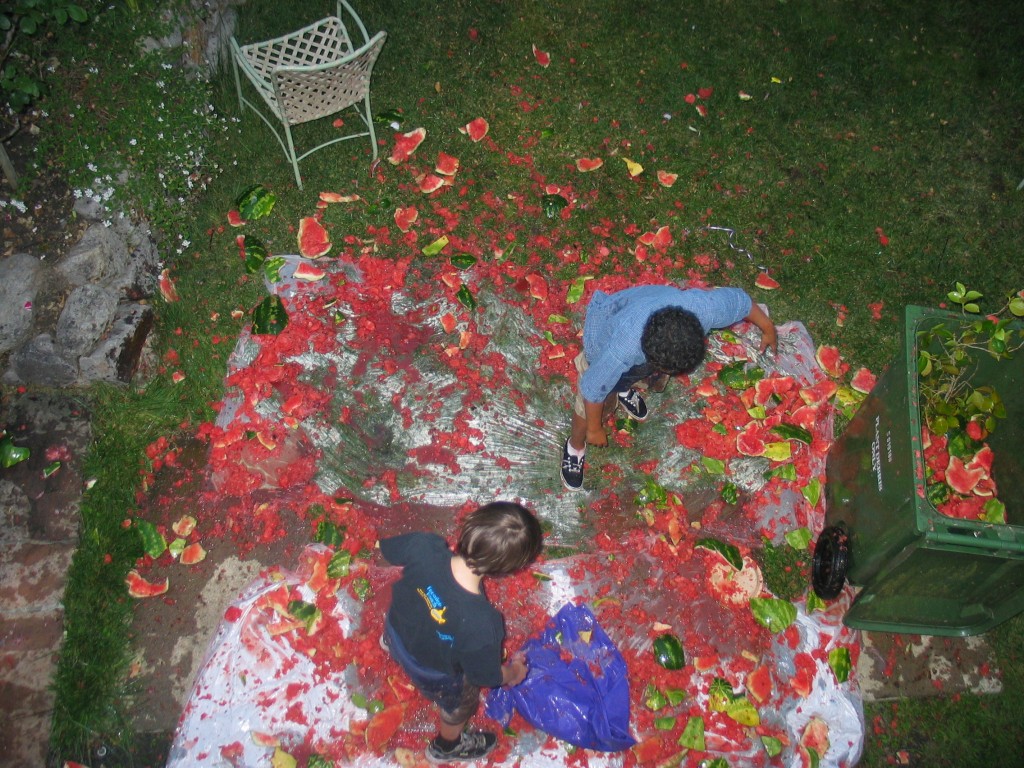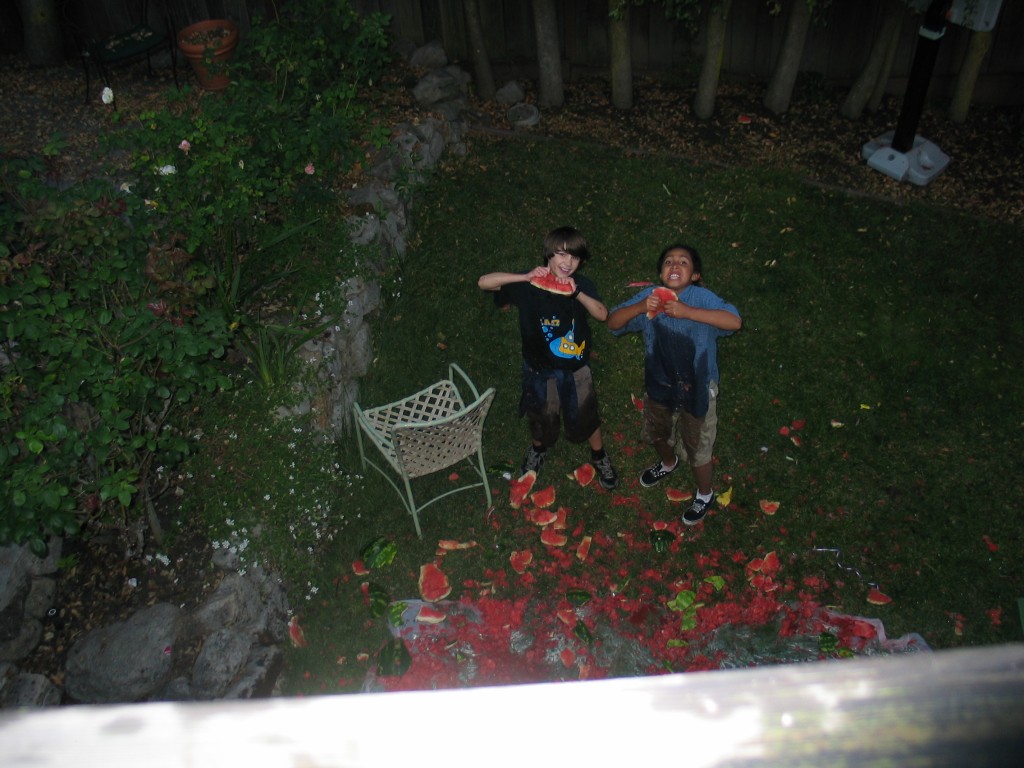Every day she walked past it, propped on an easel in a corner of her living room which she used as her studio. Sometimes it seemed to stare at her from across the house. The large white canvas had sat like that, empty, still, for months. The box of paints and brushes waited quietly under the easel. She used to love those paints and that wide open canvas, taking delight in mixing the colors and blending strokes into beautiful forms. But not anymore. Not with the doubts she entertained. Now the white canvas seemed like a threat. Finally one day, she covered it up with a plaid tablecloth.
When she first started out as an artist she had painted local flowers, almost more like sketches than full paintings. In fact, sometimes there were more weeds than flowers. In reality, they were compositions of California wildflowers, sometimes scraggly ones, against a bit of landscape, a small piece of hillside or a patch of dirt. She favored the hardy California poppies, climbing orange nasturiums and showy Queen Anne’s lace, the native kinds that seemed to grow out of cracks and crevices, even in the dry summer. Growing up among these plants, they felt like part of her nervous system. Many were edible too, a fact some people didn’t know but which made them, for her, even more interesting. After she some time, she threw a dinner party to show her paintings and she sprinkled flowers decoratively into the salad and on top of the chicken. She could still remember the excitement of that “opening” night.
Over time and with more confidence her paintings evolved into a single, robust flower, often a poppy. It was fully open, with soft petals covering the entire large canvas. She began to use bolder reds and oranges, warm colors that felt exotic and reminded her of Morroco or India. Small lines of black detailed the statem and seeds. Sometimes she would add a dewdrop into the fold of a flower, inside of which she would paint a small insect, a seed or sometimes the reflection of tree or cloud. She liked the surprise effect of it. Friends and acquaintances responded to the paintings. Some compared her big flowers to Georgia O’Keefes and her colors to Gaugin’s, which she didn’t mind. She felt all great art is imitation. She sold more than a dozen of her paintings and people began asking for them.
That’s about when things changed, she thought. One night at a dinner party a friend of her husband’s asked about her paintings and what meaning they held. He was convinced they must hold some special message. The conversation turned into a bit of an argument. She told him they had meaning for each person in a different way and each painting was different. He didn’t like that answer and began to question her on her technique, her inspiration, which painters she admired. She recalled Georgia O’Keefe and how angry she had become when people tried to analyze her work. She could sympathize. Secretly, though, she was also flattered. Many people assumed the flowers were only beautiful and held no meaning beyond that. She knew otherwise; but she also knew that explaining what the subjects meant to her, the associations they carried, would automatically limit what they might evoke in another person.
That was three months ago. But could she really blame that conversation on her current state of mind or was it just the natural end of a phase of work? Her friends noticed her unhappiness and encouraged her not to worry about it. She would find her path again soon. Why don’t you try something different for a while, they suggested. One friend sung the praises of her walking group and invited her to join. Another friend started a book group and thought she might enjoy it. None of these things seemed right. She was stuck and her complaints grew louder. Her movements around the house grew quicker and less thoughtful. She lost her ability to concentrate on anything more than the most simple task. She saw white everywhere. Her white bedsheets reminded her of her canvas. The white streaks of clouds floating by, which she once found fascinating, made her melancholy. One night she woke up in a sweat, dreaming she had been running away from some wild animal and could not find safety. The dream looked like her old paintings, full of poppies blooming on a hillside; at the bottom of the hill was a pile of bones and dead insects. Some mix of fear and then grief blended within her. She was surprised the dream had no color, only black and white. She thought for a moment: Do I dream in color normally? She couldn’t remember.
Her husband gave her the final push: Why don’t you get away for a while? A change of scenery would be good. Before she could doubt this idea for more than five minutes, an old friend called, seemingly coordinated with her husband’s suggestion. Her friend, Laura, was traveling home and had rented a house at Stinson Beach for two days. She’d love some company. Would she like to come? With no excuse left, she decided to go.
Driving the windy road over the mountain to the beach, she already felt some relief. She could finally escape the white canvas. The wispy clouds over the tops of the Redwood trees didn’t bother here. They felt liberating. After a half-hour she reached the summit and saw the ocean stretching below. It was a clear day, no fog. That was good.
She pulled up to the rented house, at the end of a long block of other houses. She listened to the driveway gravel crunch under her tires and thought about stepping out onto the grainy sand on the other side of the house.
“Mary, it’s so good to see you!” her friend Laura said before she could look up. Laura was standing at the door with a big smile and gave her a hug. “It’s been forever! Come in and have a drink. Here—I’ll take your bag.”
Laura’s personality filled the house and buoyed her. She had a loud and frequent laugh and seemed to be at ease in the world. She talked on and on about the last few years, her various jobs in sales, her dog, her parents, her forays into various hobbies—first judo (for self-defense), kickboxing (too physical), and now a dance-exercise class called Zumba. Then she went into detail about her latest boyfriend, Jalish, who she had met while out dancing with friends. His parents were from India and he had caught her eye with his handsome dark skin and hair and his immediate interest in her. Now, though, after four months, she had hesitations about dating a man who was from another culture.
Mary listened to her friend, at first entertained and warmed by all of her talk, but later slightly jealous as she wondered how her friend seemed to be free of the angst of an artist.
Finally Laura asked Mary what she had been doing and Mary tried her best to bring her up to date as well, with news about her family, her husband, a detailed story about a trip they took to Canada to see the Buchart Gardens on Victoria Island—but she avoided talking about her work.
“How is your painting going? Last time we talked you were so busy in your studio. I was a little worried you’d get swallowed up in there,” she joked.
Mary was slow to respond. “Well, I’m changing directions. I can’t paint the same things anymore.”
She realized that it felt good to verbalize what was happening. She hadn’t known that she was changing directions until she said it.
“Changing directions? Where are you headed? Or are you unsure?” asked Laura, sensing that the subject was a little unsettling.
“I’m not really sure,” Mary said, looking out the window at the beach searching for something.
“Well, let’s take a walk,” said Laura, a bit abruptly. It’s sunny now and we should get out before the wind comes up. When we come back I’ve got stuff to make pasta.”
“That sounds great,” said Mary, eager to explore the beach.
They put on jackets and walked out the back door, down some wind-worn deck stairs, and out onto the sand.
The beach was long and unusually empty for such a sunny day. The wind was just a slight breeze, enough to lift a kite maybe but not to be a bother.
The two women were quiet for a moment, observing the scene around them. Mary felt a tiny spasm of panic as she saw the wide open sand, the whiteness of it. But then Laura began talking again and told her more about her boyfriend and his family and how, being Hindu, they were a bit wary of Laura. Laura wasn’t sure what to do about this. Would the family ever totally accept her? How would they relate on a deeper level if they came from two different traditions?
Mary wasn’t sure what to tell her. She looked into the sand and studied the particles–white, brown, grey. She imagined the thousands of rocks and shells that had been pounded down to create the beach. Year after year the Pacific Coast waves had been pulled by a force beyond their control millions of miles away to smash and crash the shore and make this collage. Here and there strewn about were piles of debris–pieces of driftwood and tangled strands of seawood the color of green rubber gas masks. The strands ended in giant round bulbs that looked like outerspace creatures. Here was beneath here feet was a masterpiece of shapes and colors, created effortlessly.
Laura was still talking. “We seem to get along so well, but I just don’t know if it’s good to continue,” she said.
“Maybe there’s no rush to decide,” was all Mary could think of. “Perhaps you need more time.”
“Yes, you’re probably right,” Laura said.
They were close to the water’s edge now and a dog ran by, nearly running them over as it barked and charged at a flock of seagulls. The gulls shot in the air and squaked.
The women laughed.
“Remember how annoying those seagulls used to be at school? They would always try to steal our lunch,” said Laura.
Mary nodded. She remembered how the pesky birds would circle the playground and swoop down at any unattended food. Some kids took to throwing things at the seagulls to keep them away. “They were really a pain.”
Mary looked down at the streak of paw prints left behind by the dog and saw a tiny shell. She picked it up and examined it. “That’s a pretty one,” she said. All of a sudden, she said to Laura: “Maybe you don’t need more time with Jalish. I think you can work out the cultural issues. If you really get along well and he treats you well, why hesitate?”
Laura smiled. “Thanks. Maybe you’re right.”
Just then they caught sight of a single seagull, a lucky one who had spotted someone’s leftover sandwich and was having a feast. Mary examined the seagull. It had to be the most ordinary of birds but on further inspection, she noticed that the white of its chest and the grey on its feathers blended beautifully with sand and driftwood. If you squinted it might just disappear into the sand. Except for the red beak. That red beak was like a bolt of color.
“You know, seagulls aren’t that bad looking,” said Mary. “I never really looked at one before.”
Mary had an idea then. She imagined her blank canvas back in her living room filled with the movement of birds. They might be seagulls; she wasn’t sure. But she began to be intrigued with the idea of painting flight, the same way a photographer is obsessed with capturing a perfect moment of light and motion.
The wind was starting to blow more strongly and the seagull took off and let the air carry him up.
Mary felt it’s sense of energy and pictured herself immersed in paints.
“Let’s go back to the house. I’m ready to eat,” she said, a little impatiently.
“Sure,” said Laura.





